Mighty Enlil Of The Sumerian Pantheon Of Gods
A. Sutherland - AncientPages.com - Ancient Sumer had a very complex pantheon of gods and goddesses, but four of these powerful figures played an important role because they were creators of everything.
Enlil (EN.LIL – his name meant "lord of the airspace" or “the air-god”) was the king of earth and heaven.
According to Sumerian beliefs, Enlil arrived on Earth well before the human race was created. He was Anu's eldest son; these two share the same epithets in different ancient texts, which describe Enlil -the second in the triad of Sumerian supreme gods – as "The Great Mountain" or "King of All the Lands" (lugal-kur-kur-ra) and “Father of the Gods.
Enlil's role in is based on Enlil’s power and authority is clearly emphasized in the Mesopotamian mythology; he creates and destroys and is the "decreer of fates".
He has the right to rule the world and to give kingship to kings and rulers, who turn to him to verify their claims to power. Enlil himself announces the king's name and awards him the scepter - a sign of his favor and acknowledgment.
He had placed gods on earth, arranged dwellings and cult places for them, which were not to be changed. Each god owned a special territory, which included a house, a temple to live in and priests to serve him. Enlil’s holy city of Nippur was called “built on its own”.
One example is mentioned in “The Lament for Urim” when Enlil is said to have "brought the storm of abundance away", to have "annihilated the land, silenced the city" (ETCSL 2.2.2).
As the "Lord of abundance", Enlil is a provider, but at the same time, this great authority could also take such plenty away from people and devastate the land.
Although Anu had authority over the pantheon of Sumer, Enlil was even more powerful as he embodied energy and force. He was also the god of agriculture, who separated earth and heaven to give the place for planet’s seeds to grow. He designed the plans to bring all trees, plants, and seeds to people on Earth.
 According to one myth, Enlil raped his consort Ninlil (Sud, in a Sumerian myth), the goddess of grain.
According to one myth, Enlil raped his consort Ninlil (Sud, in a Sumerian myth), the goddess of grain.
Despite the fact that Sumerian gods were powerful they were obliged to follow certain rules. Even the supreme god, Enlil, was once punished for his transgressions and exiled to the underworld.
Enlil’s cult center was at Nippur, the city located in central southern Mesopotamia and dedicated to him; his great sanctuary, the E.KUR ("house which is like a mountain") was also located at Nippur. In the divine area of Nippur, Enlil had his court, where he met with the gods for assembly.
As the “Lord of Destinies”, Enlil was the keeper of the “Tablet of Destiny”, which was stolen from him the evil bird-god Zu, who knew that the wearer of this tablet had the full control of the universe and fates of all.
In the Akkadian sources, Enlil’s nature is often described as malevolent and his “… command no god can set aside”. However, many disagree with this description of the mighty Enlil. Contrary to the common belief, Enlil was not a destructive deity who intended to harm to people. Instead, he was given the task to bring destruction and misfortune when it was required and decided by the Pantheon’s gods.
Many ziggurats devoted to Enlil existed in different locations such as Assur, Babylon, Dur-Kurigalzu and, probably, in Elam, outside of Mesopotamia.
Written by – A. Sutherland AncientPages.com Staff Writer
Copyright © AncientPages.com All rights reserved. This material may not be published, broadcast, rewritten or redistributed in whole or part without the express written permission of AncientPages.com
Expand for referencesReferences:
E. Wilshire, Insight into Two Biblical Passages
R.G. Kratz,H. Spieckermann, One God – One Cult – One Nation: Archaeological and Biblical Perspectives
More From Ancient Pages
-
 Death And Afterlife In Sumerian Beliefs
Civilizations | May 12, 2017
Death And Afterlife In Sumerian Beliefs
Civilizations | May 12, 2017 -
 Isabel Neville And Unsolved Mystery Of Her Death
Featured Stories | Mar 28, 2019
Isabel Neville And Unsolved Mystery Of Her Death
Featured Stories | Mar 28, 2019 -
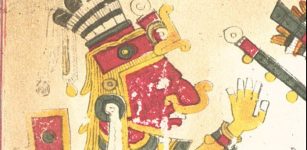 God Patecatl – Father Of ‘Four Hundred Rabbits’ In Aztec Beliefs
Aztec Mythology | Mar 9, 2018
God Patecatl – Father Of ‘Four Hundred Rabbits’ In Aztec Beliefs
Aztec Mythology | Mar 9, 2018 -
 Disappearance Of Neanderthals: Were Inbreeding And Demographic Shifts Responsible?
Archaeology | Nov 28, 2019
Disappearance Of Neanderthals: Were Inbreeding And Demographic Shifts Responsible?
Archaeology | Nov 28, 2019 -
 Star-Shaped Magnetic Anomaly At Hidden Stone Circle In The Outer Hebrides Gives New Insight Into Ancient Beliefs
Archaeology | Jan 2, 2020
Star-Shaped Magnetic Anomaly At Hidden Stone Circle In The Outer Hebrides Gives New Insight Into Ancient Beliefs
Archaeology | Jan 2, 2020 -
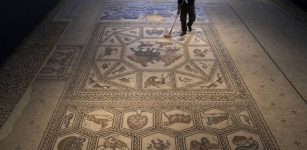 Exceptional 1,700-Year-Old Roman Mosaics Have Returned Home To Israel
Archaeology | Jun 27, 2022
Exceptional 1,700-Year-Old Roman Mosaics Have Returned Home To Israel
Archaeology | Jun 27, 2022 -
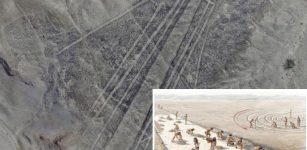 Dozens Of Giant ‘Lost’ Nazca Geoglyphs Unearthed By Drones In Peru
Archaeology | Apr 7, 2018
Dozens Of Giant ‘Lost’ Nazca Geoglyphs Unearthed By Drones In Peru
Archaeology | Apr 7, 2018 -
 Sonar Images Reveal The Existence Of A 700-Year-Old Shipwreck At The Bottom Of Lake Mjøsa, Norway
Archaeology | Nov 22, 2022
Sonar Images Reveal The Existence Of A 700-Year-Old Shipwreck At The Bottom Of Lake Mjøsa, Norway
Archaeology | Nov 22, 2022 -
 Rings Of Moray – Sophisticated Irrigation System In Sacred Valley Of The Incas, Peru
Ancient Technology | Sep 11, 2015
Rings Of Moray – Sophisticated Irrigation System In Sacred Valley Of The Incas, Peru
Ancient Technology | Sep 11, 2015 -
 The Perplexing Story Of The Seven Continents And The Seven Mysterious Races – Distant Past – Part 1
Ancient Mysteries | May 9, 2022
The Perplexing Story Of The Seven Continents And The Seven Mysterious Races – Distant Past – Part 1
Ancient Mysteries | May 9, 2022 -
 Legendary Pirate Black Sam And His Ship Discovered Off The Coast Of Cape Cod
Archaeology | Feb 12, 2018
Legendary Pirate Black Sam And His Ship Discovered Off The Coast Of Cape Cod
Archaeology | Feb 12, 2018 -
 Pooka: Solitary Spirit And Not Entirely Benevolent Prankster In Irish Folklore
Celtic Mythology | Jun 4, 2016
Pooka: Solitary Spirit And Not Entirely Benevolent Prankster In Irish Folklore
Celtic Mythology | Jun 4, 2016 -
 Library Of Celsus: Beautiful Classic Monument In Ephesus That Stored 12,000 Scrolls
Civilizations | Nov 14, 2018
Library Of Celsus: Beautiful Classic Monument In Ephesus That Stored 12,000 Scrolls
Civilizations | Nov 14, 2018 -
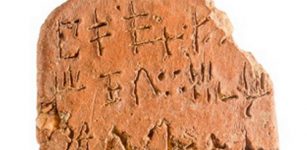 New Clues To Minoan Writing System
Archaeology | Sep 10, 2020
New Clues To Minoan Writing System
Archaeology | Sep 10, 2020 -
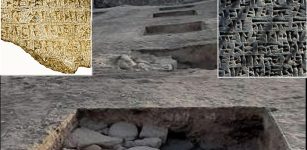 Monumental Structure Unearthed During Excavations Of Urartu-Era Karmir Blur
Archaeology | Nov 25, 2022
Monumental Structure Unearthed During Excavations Of Urartu-Era Karmir Blur
Archaeology | Nov 25, 2022 -
 First Peoples’ Early Migration To Australia – Influenced By Evolving Landscapes
Archaeology | May 6, 2024
First Peoples’ Early Migration To Australia – Influenced By Evolving Landscapes
Archaeology | May 6, 2024 -
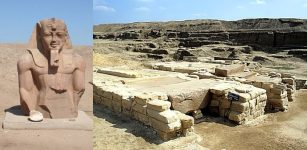 Pi-Ramesse: Pharaoh Ramesses II’s Great Capital Surprisingly Identified In Two Locations
Featured Stories | Jun 9, 2022
Pi-Ramesse: Pharaoh Ramesses II’s Great Capital Surprisingly Identified In Two Locations
Featured Stories | Jun 9, 2022 -
 Fossil Bones From The Largest Penguin That Ever Lived Unearthed In New Zealand
Fossils | Feb 10, 2023
Fossil Bones From The Largest Penguin That Ever Lived Unearthed In New Zealand
Fossils | Feb 10, 2023 -
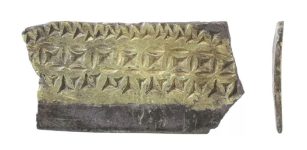 What Is The Roman Silver Fragment Found In Norfolk? Experts Are Baffled
Archaeology | Mar 27, 2023
What Is The Roman Silver Fragment Found In Norfolk? Experts Are Baffled
Archaeology | Mar 27, 2023 -
 Did Pharaoh Shishak Plunder King Solomon’s Temple?
Biblical Mysteries | Jan 15, 2020
Did Pharaoh Shishak Plunder King Solomon’s Temple?
Biblical Mysteries | Jan 15, 2020


